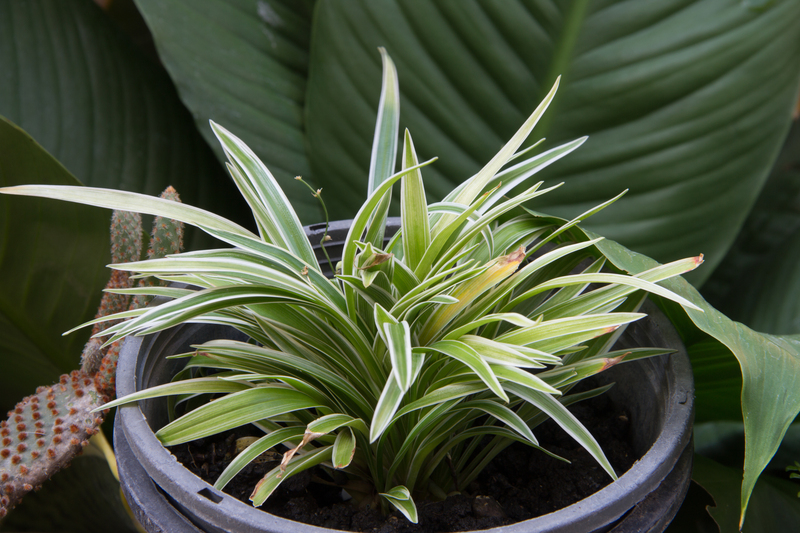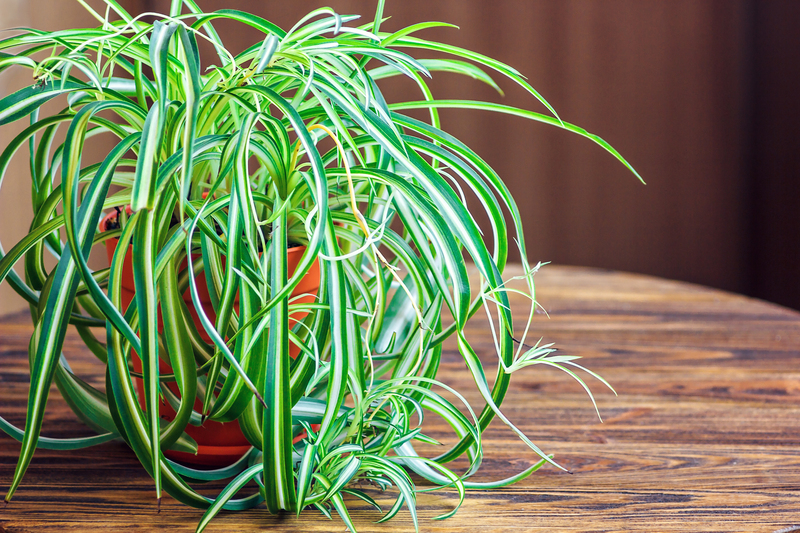Navigate the Challenges of Weed Control with 3 Tips
Posted on 21/08/2025
Navigate the Challenges of Weed Control with 3 Tips
Weed control is an ongoing battle for gardeners, landscapers, and farmers alike. Unchecked weeds not only reduce the aesthetic value of landscapes, but also threaten the health of lawns, gardens, and crop fields by competing with desirable plants for water, nutrients, and sunlight. Managing these invasive species can sometimes feel like a never-ending task. However, effective weed management is achievable with the right knowledge and strategies. In this comprehensive guide, we will help you navigate the challenges of weed control by sharing three powerful tips that will transform your approach to maintaining a weed-free environment.
Understanding the Challenges of Weed Control
Weeds are more than just an eyesore; they are highly adaptive, resilient, and persistent. They can thrive in almost any environment, spread rapidly, and some even develop resistance to herbicides. This adaptability makes controlling weeds challenging and frustrating for both amateur and professional growers. Here are just a few reasons why weed management is such an intricate task:
- Rapid growth rates: Weeds often outcompete desired plants by growing faster and adapting to a wide range of conditions.
- Seed production: Many weed species produce thousands of seeds annually, which can remain viable for years.
- Resilient root systems: Some weeds regenerate from even the smallest root fragments, making total removal difficult.
- Herbicide resistance: Improper or repeated use of chemical controls can lead to resistant weed populations.
These challenges highlight the necessity of a multifaceted approach for successful long-term results. Below, discover three essential tips that will help to simplify your weed management strategy and offer sustainable solutions for any setting.

Tip #1: Focus on Prevention to Reduce Weed Problems
When it comes to effective weed control, prevention is your first and best line of defense. Preventing weeds from establishing in the first place greatly reduces ongoing maintenance and the need for aggressive intervention later. Here's how you can implement strong preventative measures:
Build Healthy, Dense Plantings
- Plant cover crops: Cover crops such as clover, rye, or vetch serve as living mulch, crowding out weeds and restoring soil health for future plantings.
- Practice close spacing: When growing vegetables, flowers, or turfgrass, reduce gaps so that less light reaches the soil surface--depriving weed seeds of the conditions they need to germinate.
- Use groundcovers and mulches: Organic mulches (like wood chips, straw, or shredded leaves) block sunlight, smother emerging weeds, and improve soil fertility as they decompose. Inorganic mulches (such as landscape fabric or plastic mulch) create a long-lasting physical barrier. For best results, apply a layer at least 2-3 inches thick and replace or replenish as needed.
Maintain Your Borders and Entry Points
- Edge your garden beds: Maintain well-defined boundaries between lawns, beds, and pathways to keep creeping weeds from encroaching.
- Inspect compost and soil amendments: Only use compost or manure that has been properly heated to kill weed seeds before adding to your beds.
- Clean equipment: Always wash off tools, mower blades, and footwear after working in infested areas to avoid spreading seeds unintentionally.
Prevention may require up-front effort but yields significant long-term savings in both time and money. By employing these methods, you can drastically reduce the number of weeds that ever appear in your growing spaces.
Tip #2: Implement Integrated Weed Management Practices
Integrated Weed Management (IWM) is a holistic approach that combines cultural, mechanical, biological, and chemical methods to control weeds. Instead of relying on a single solution, IWM acknowledges that multiple tactics are necessary for sustainable, long-lasting weed suppression.
Mechanical and Physical Control Techniques
- Hand-pulling: For smaller gardens or individual weeds, manually pulling them--roots and all--is often the most effective method. Do this after rain, when soil is moist and roots come out more easily.
- Hoeing and cultivation: Use a sharp hoe or cultivator to sever young weeds just below the soil's surface. Avoid deep tilling, as it can unearth buried weed seeds and bring them to the surface to sprout.
- Flame weeding: Specialized torches can be used to wilt and kill weed seedlings in driveways, patios, and non-flammable areas.
Cultural and Biological Practices
- Rotate crops: Changing the type of plants grown in an area makes it harder for specific weed species to establish dominance year after year.
- Introduce competitive crops or companion plants: Grow plants that shade the ground or secrete natural weed inhibitors. For example, some types of rye release compounds that impede weed seedling growth.
- Encourage natural predators: Some insects, livestock (like chickens or goats), and microorganisms feed on weed seeds and seedlings, reducing their populations naturally.
Smart and Responsible Chemical Controls
- Spot-treat persistent weeds: If you must use herbicides, target only the offending plants. This minimizes environmental impact and reduces the chances of developing resistant weed populations.
- Rotate herbicide types: Alternate between different classes of herbicides to prevent resistance.
- Always follow label directions: Applying the right concentration at the right time is essential. Never exceed recommended rates or use in unintended areas.
Integrated weed control is about balance and sustainability. By combining several of these techniques, you will develop a more effective, adaptive strategy that reduces weeds while protecting the overall health of your landscape or garden.
Tip #3: Time Your Weed Control Methods for Maximum Effectiveness
Weed seeds are most vulnerable at certain stages of development. Targeting control efforts at the right timing can dramatically increase your success rate while reducing the number of applications and labor required.
Pay Attention to Weed Life Cycles
- Identify annuals, biennials, and perennials: Annual weeds (like crabgrass) complete their life cycle in one year, while biennials (such as burdock) last two years, and perennials (like dandelions) return each season. Understand the life cycle of your target weeds to choose the best time for removal.
- Remove young weeds before they set seed: The moment you spot a flush of weed seedlings (often after rain or irrigation), act quickly. It's far easier to kill small, immature plants than fully established ones.
- Never let weeds flower: If you cannot remove them immediately, at least chop off flower heads to prevent seeds from scattering.
Strategic Application of Control Methods
- Pre-emergent herbicides: Apply these before weed seeds germinate (early spring for summer annuals; late summer/fall for winter annual weeds) for maximum efficacy.
- Mulching and cultivation: Refresh mulch or cultivate beds after heavy rains, as moisture can trigger weed germination.
- Regular monitoring: Walk your garden or property at least once a week during the growing season. Early detection saves enormous effort later.
Proactive, timed interventions yield the best long-term results. By understanding when and how to control weeds, you'll prevent major infestations and maintain a healthier landscape with less effort overall.

Bonus: Common Mistakes to Avoid in Weed Management
While mastering the art of weed control, be mindful of some common missteps that can undermine your efforts:
- Ignoring weed growth until it's overwhelming: Delayed response gives weeds time to multiply and disperse seeds.
- Using the same herbicide repeatedly: Promotes resistance and makes control harder in the long run.
- Applying mulch incorrectly: Thin layers or gaps allow light through, and weed seeds may sprout on top of mulch if not monitored.
- Poor lawn or garden care: Weak, stressed plants leave space for weeds to invade. Regular watering, fertilization, and pruning helps desirable plants outcompete weeds.
Conclusion: Achieve Lasting Weed-Free Results
Navigating the challenges of weed control is an ongoing process, but it doesn't have to be overwhelming. By focusing on prevention, embracing integrated methods, and timing your interventions appropriately, you can develop a robust and dynamic weed management strategy. Remember that vigilance and adaptability are crucial--monitor your landscape regularly, adjust tactics as needed, and always aim for a healthy ecosystem that makes it difficult for weeds to gain a foothold.
With these three expert tips for effective weed control, you'll not only reduce your workload and reliance on chemicals but also foster a thriving, beautiful, and resilient garden or landscape for years to come.
For further reading, consider exploring these related topics:
- Best Organic Weed Control Techniques for Home Gardens
- How to Identify Common Weeds in Your Area
- Creating a Year-Round Landscape Maintenance Plan
Start implementing these approaches today and watch your weed problems shrink--leaving you free to enjoy a lush, vibrant outdoor space!

